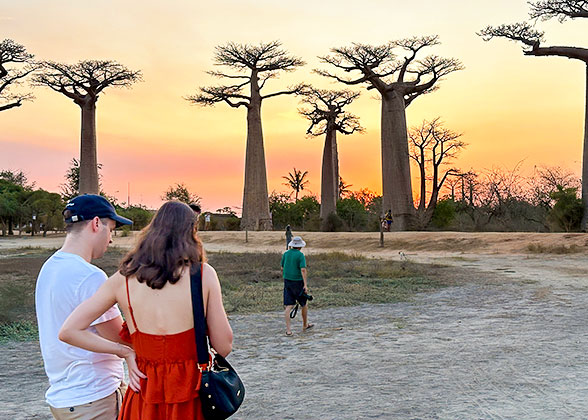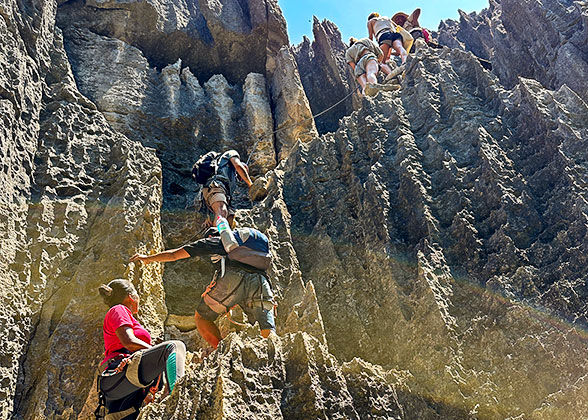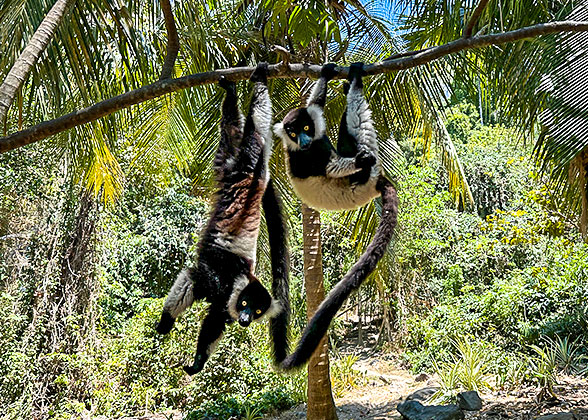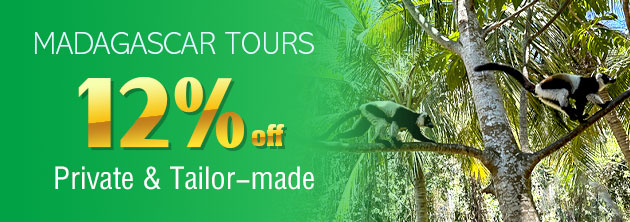Morondava Weather
Located on the central west coast of Madagascar, Morondava has tropical savanna climate with distinct dry and rainy seasons. In the driest months of the year from June to September, it seldom rains. While in the rainiest months of December to February, the average precipitation rises drastically to more than 150 mm per month.

Rickshaw of Morondava
|
 Warmest Month: January: 26.6 - 31.9°C (79.9 - 89.4°F)
Warmest Month: January: 26.6 - 31.9°C (79.9 - 89.4°F) Coolest Month: July: 20.2 - 28.3°C (68.4 - 82.9°F)
Coolest Month: July: 20.2 - 28.3°C (68.4 - 82.9°F) Wettest Month: January: 244mm rainfall/13 rainy days on average
Wettest Month: January: 244mm rainfall/13 rainy days on average Driest Months: June - September: it hardly rains.
Driest Months: June - September: it hardly rains.
![]() See also: Madagascar Weather
See also: Madagascar Weather
April to November has a little or no rainfall, so the conditions of the local dirt roads are good and you can travel around without worrying about sudden rainfalls. Avoid December, January and February if possible, because of the rainy climate and muddy roads. However, if you plan to come in this period, pick some sunny days.
Rainy Season: December to March
 Total Average Precipitation: 707 mm
Total Average Precipitation: 707 mmMorondava has a rather short rainy season. However, the rainfall during this time contributes to about 89% of the average annual precipitation. Due to the terrible traffic and road condition in the rainy season, it’s not easy to travel to or travel around in Morondava and some attractions like Kirindy National Park may be shut down. Thus, plan your schedule wisely.
 Outfit & Essentials: T-shirt, thin pants and comfortable flats make up the most recommended outfit. To visit Morondava in rainy season, raingear is an essential. Raincoat and umbrella are both fine. You are also advised to wear a hat to prevent against the strong sun rays on sunny days.
Outfit & Essentials: T-shirt, thin pants and comfortable flats make up the most recommended outfit. To visit Morondava in rainy season, raingear is an essential. Raincoat and umbrella are both fine. You are also advised to wear a hat to prevent against the strong sun rays on sunny days.
 Best Things to Do:
Best Things to Do:
1. In the rainy season, baobabs with lush leaves are quite different from what you will see in the dry season. You can go to Avenue of the Baobabs to have a look. Their trunks are also thicker than in the dry season.
2. Enjoy a peaceful and rewarding trip in primitive Betania Village, where tap water and electricity are not available and people still live in primitive ways.
3. A visit to Kimony Resort will make your trip worthwhile. In rainy season, this reserve is more easily to be reached than others. Friendly lemurs here have already been used to visitors’ feeding.

Tsiribihina River in Rainy Season
|
Dry Season: April to November
 Total Average Precipitation: 80 mm
Total Average Precipitation: 80 mm

Tsingy de Bemaraha National Park
|
 Outfit & Accessories: Best outfit for you during the dry season is T-shirt, shorts, and breathable sneakers. For accessories, apart from caps, you may wear a facial mask if you are allergic or sensitive to dust. A neck fan won’t take up too much room in your luggage, but it can allay your uncomfortableness and bad emotions caused by the scorching weather.
Outfit & Accessories: Best outfit for you during the dry season is T-shirt, shorts, and breathable sneakers. For accessories, apart from caps, you may wear a facial mask if you are allergic or sensitive to dust. A neck fan won’t take up too much room in your luggage, but it can allay your uncomfortableness and bad emotions caused by the scorching weather.
 Best Things to Do:
Best Things to Do: 1. Do not miss the sunset on Avenue of the Baobabs. Or you can get up early to see the sunrise, which is another kind of splendid view to visitors.
2. In addition, Kirindy Mitea National Park provides visitors with its unique and diversified species - fossa, chameleon, lemur, and some of Madagascar’s endemic birds. And at least 3 kinds of baobab trees grow here.
3. Dry season is also perfect to go snorkeling or surfing in Belo sur Mer, where the well-protected coral and rich biodiversity under the ocean will feast your eyes.
4. You may also come to Tsingy de Bemaraha National Park to appreciate the grandness of karst landscape, which opens only in the dry season.

Sunset on Avenue of the Baobabs
|
Travel Tips:
1. Try to stay indoor around noon, the hottest time of the day, and when the ultraviolet rays are strongest.2. Drink enough water during the trip in case you have sunstroke.





